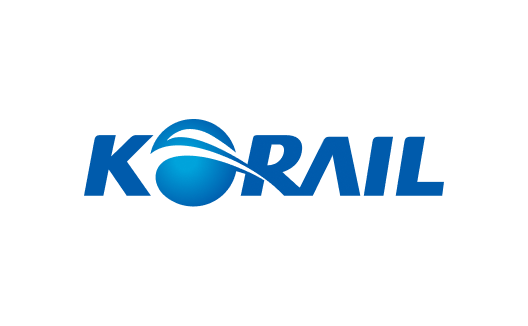Middleware
Tmax
Transaction Processing Monitor
Increase business reliability with TP-Monitor
Tmax (Transaction Maximization) is a TP-monitor that perfectly processes mission-critical tasks, all while offering optimized development environments for developers.

Tmax
Transaction Processing Monitor
Tmax (Transaction MAXimization) is a TP-monitor that perfectly processes mission-critical tasks, while offering optimized development environments for developers.
TP-monitor (Transaction Processing Monitor) serves as a platform for application development and operation, efficiently managing overloaded processes and ensuring data consistency during transaction processing.
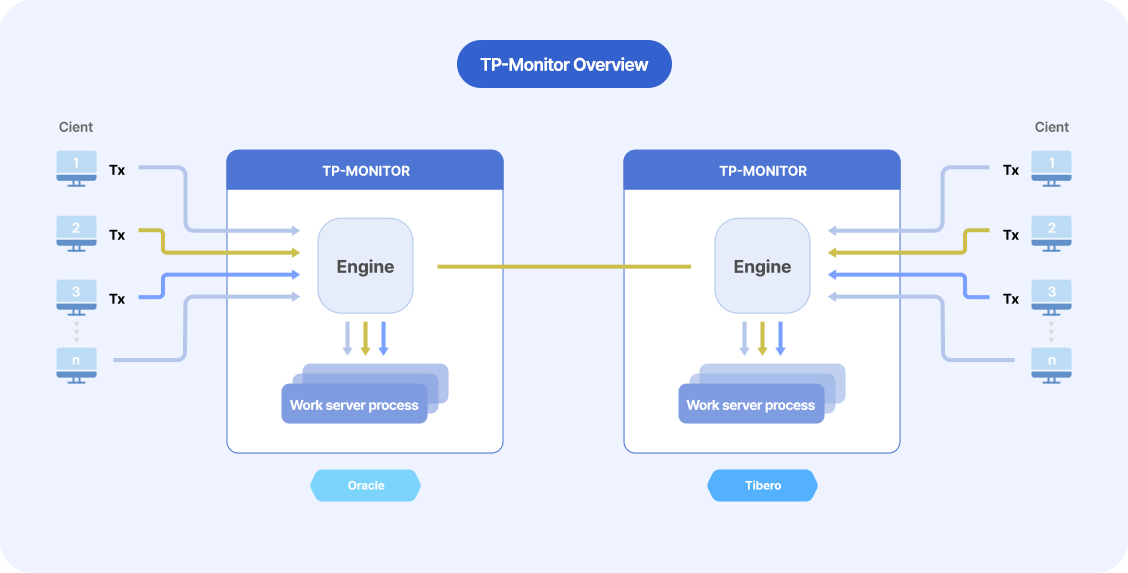
Tmax maximizes performance through transparent business processing and provides an optimized computing environment for developers and system administrators by perfectly handling critical core tasks. In addition, it ensures the stability of customer systems by controlling the load and preventing failures in highly important systems where tens of millions of transactions occur per day across all industries, including finance, public, communications, manufacturing, and distribution.
Tmax Overview
- Possesses the largest number of cases in Korea, including the financial sector
- Verified TP-Monitor that leads the market
- Processes Mission Critical periodical work
- Complete compliance with international standards for distributed transactions
(X / Open DTP) - Open & Flexible
Architecture
-
Overview
- Online Transaction Process (OLTP) Middleware
- Provides transparent business processing and OLTP support between different types of devices in a distributed environment
- Complies with the DTP model of X/Open, the international TP-Monitor standard
- Defines functional distribution of DTP service by international standards organization OSI and definition of API and system interface between functional components
-
History of domestic and international certification and award
- October 1998 New Software Award [Minister of Information and Communication]
- December 1999 Selected as an excellent product by Public Procurement Service
- August 2001 Selected as a next-generation world-class product [Ministry of Commerce, Industry and Energy]
- October 2002 Received the Prime Minister's Award as a company of merit for commercializing new technology (Tmax, WebtoB, JEUS Ministry of Commerce, Industry and Energy)
Why choose Tmax?
-
 Peer-to-Peer mutual surveillance systemWith node monitoring different node method, Tmax can immediately respond to failures no matter how many nodes there are. In the case of the Master/Backup method of 3rd parties, it is impossible for other nodes to respond to failure in the event of a Master failure, but Tmax can fully cope with the overall system failure.
Peer-to-Peer mutual surveillance systemWith node monitoring different node method, Tmax can immediately respond to failures no matter how many nodes there are. In the case of the Master/Backup method of 3rd parties, it is impossible for other nodes to respond to failure in the event of a Master failure, but Tmax can fully cope with the overall system failure. -
 I/O MultiplexingWith optimized service request distribution (multiplexing processing) through a single process, Tmax consumes less resources while processing large-capacity of resources.
I/O MultiplexingWith optimized service request distribution (multiplexing processing) through a single process, Tmax consumes less resources while processing large-capacity of resources. -
 Stream Pipe internal communication methodTwo-way communication between processes enables rapid response to process-specific loads and failures, ensuring stable and high performance.
Stream Pipe internal communication methodTwo-way communication between processes enables rapid response to process-specific loads and failures, ensuring stable and high performance.
Communication Methods Comparison
-
Stream Pipe (Tmax)
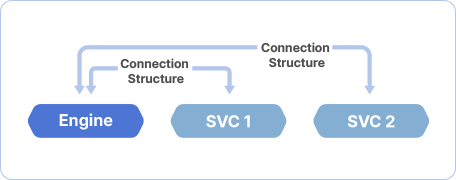
- Follows Pid-centric standardized resource management
- Excellent processing speed (fewer system calls when performing)
- Rapid response to service load and failure through two-way communication
- Prevents Queue full
-
Message Queue (3rd-party)
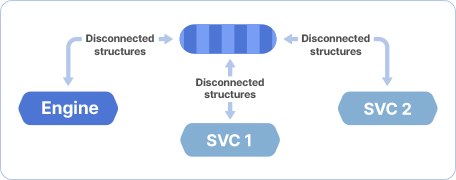
- Uses message queue method based on the UNIX architecture
- Low processing speed (many system calls when performing)
- Communicating via Message Queue can present challenges in handling service load and addressing failures
- Service overload can lead to 'Queue Full' errors, resulting in disruptions
Ensures high performance with dynamic and diverse load distribution
It also supports various types of load balancing, such as client, server process, and node load balancing, to efficiently manage workloads and improve performance
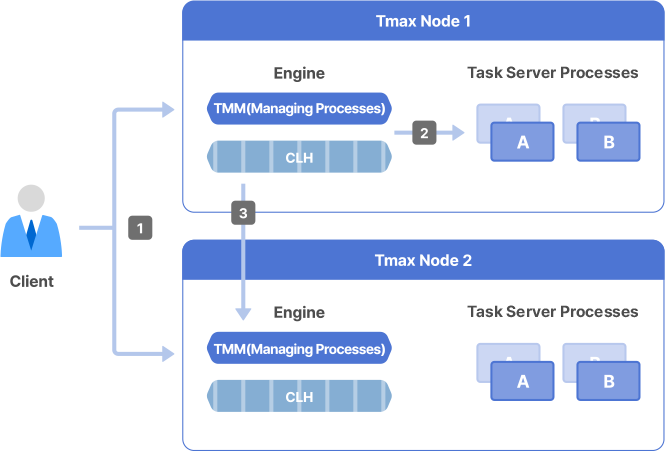
- Client load balancingDynamic load balancing performed at the client-side
- Server process load balancingSelect the optimal process for service function by analyzing client requests
- Node load balancingLoad distribution between nodes when setting up a cluster. Load balancing by data value (DDR), load balancing by hardware performance (SLM), dynamic load balancing (DLM)
Fulfill customer needs with various features and user-friendly solution
Tmax also enhances management convenience by providing zero downtime deployment of applications during operations.
| Process type | Description | Practices |
|---|---|---|
| TCS (Tmax Control Server) |
Manually execute upon client request | Applicable for most other products |
| UCS (User Control Server) |
Proactively run without client request | Tmax-specific features, used for Scheduler, Push service |
| POD (Process On Demand) |
Boot on demand, shut down after performing tasks, and prevents unnecessary OS resource occupancy | Suitable for tasks such as monthly settlement |
-
 Various Process TypesTmax offers 3 process types to maximize program flexibility during application development. Unique features of Tmax, such as User Control Server (UCS) and Process On Demand (POD), are particularly well-suited for implementing push services and batch applications, thus improving usability.
Various Process TypesTmax offers 3 process types to maximize program flexibility during application development. Unique features of Tmax, such as User Control Server (UCS) and Process On Demand (POD), are particularly well-suited for implementing push services and batch applications, thus improving usability. -
 Zero Downtime DeploymentBy using the Dynamic Library Linking method provided in the OS, it provides zero downtime deployment and version management features for applications developed in the form of a shared library.
Zero Downtime DeploymentBy using the Dynamic Library Linking method provided in the OS, it provides zero downtime deployment and version management features for applications developed in the form of a shared library. -
 Hybrid Messaging SystemHybrid Messaging System enables loose coupling between the sender and receiver, enabling stable processing of large amounts of data occurring simultaneously. Tmax is equipped with this feature as a default, so customers can use it for a variety of tasks.
Hybrid Messaging SystemHybrid Messaging System enables loose coupling between the sender and receiver, enabling stable processing of large amounts of data occurring simultaneously. Tmax is equipped with this feature as a default, so customers can use it for a variety of tasks.
